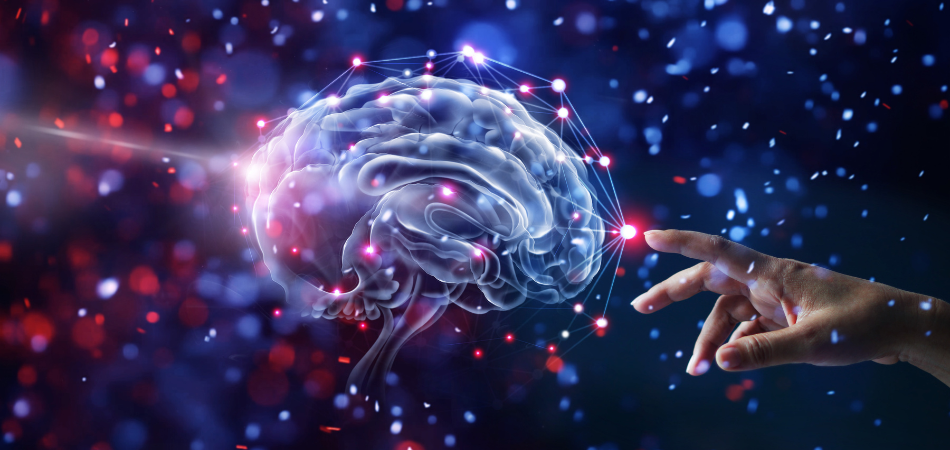The basics of the disease model of addiction
The disease model of addiction defines addiction as a chronic, relapsing brain disease characterised by compulsive substance use despite harmful consequences. Key principles include recognising addiction as a medical condition, understanding it requires long-term treatment and viewing it similarly to diseases like diabetes or heart disease.
Unlike moral or behavioural models, which see addiction as a choice or moral failing, the disease model emphasises the role of genetics and biology. It acknowledges that individuals may have a genetic predisposition that makes them more susceptible to addiction. Changes in brain structure and function due to substance use also play a critical role, affecting areas responsible for judgement, decision-making and behaviour control.
Historical context and development
In the past, people often exclusively saw addiction as a moral failure or a lack of willpower, so treatments were focused on punishment or moral reform. Things began to shift in the 20th century when addiction started being viewed as an issue with the brain, especially the prefrontal cortex, where all ‘desires’ were formed.
By the mid-20th century, various methods were promoted as effective treatments for addiction, especially for alleviating opiate withdrawal symptoms. In 1932, a doctor enthusiastically reported that inducing a mild coma with injected insulin eliminated all cravings in a morphine-addicted patient. The 1940s saw a similar embrace of electroconvulsive (“shock”) therapy.
Some even went so far as to recommend lobotomies as a remedy for addiction. The prefrontal lobotomy, developed in 1935, was among the more extreme measures considered during this period.
Interestingly enough, whilst lobotomies were being practised as a cure for addiction, one of the most influential moments in addiction study histories was brewing: the creation of A.A (Alcoholics Anonymous). Bill W., one of the founders, realised that addiction was a mix of “the mind, emotions and body”, eventually forming the idea of addiction as a disease.
In 1956, the American Medical Association recognised alcoholism as a medical illness, giving the disease model even more support.
Important studies, like those by Dr. E. M. Jellinek on the progression of alcoholism as a disease and research into the genetic aspects of addiction beginning in the 1970s, were crucial.
Figures like Dr. Nora Volkow has made a huge impact, too. Her brain imaging research has helped everyone understand addiction as a brain disorder, emphasising the need to treat it as a chronic medical condition.

How has viewing addiction as a disease helped those with addictions?
Viewing addiction as a disease has profoundly impacted those struggling with it by reducing stigma and encouraging greater empathy and understanding from the public rather than viewing those with addiction in a negative light. Although social stigmas still exist in some societies, this shift has led to better access to medical treatments and comprehensive care, integrating medical, psychological and social support to enhance recovery outcomes.
Here are some examples of how the shift has helped the overall advancement of addiction treatment:
- Viewing addiction as a disease has helped to remove personal blame, empowering people to seek help and engage in their recovery journey with hope.
- With insurance companies now more likely to cover addiction treatment, it has become more affordable and accessible.
- The disease model promotes the use of evidence-based practices and ongoing research, resulting in more effective treatments.
- Recognising addiction as a chronic condition highlights the importance of long-term support and relapse prevention, improving the chances of sustained recovery.
- Advocacy efforts have strengthened, leading to policy changes and better resources for treatment and prevention.
Criticisms and controversies
While influential and helpful in many areas of addiction studies, there are criticisms and controversies raised by those opposed to viewing addiction as a disease.
Critics argue that the disease model might downplay personal responsibility. They believe that seeing addiction purely as a disease can overlook a person’s ability to make choices and take control of their behaviour.
For example, someone might think, “If my addiction is just a disease, then there’s nothing I can do about it. I can’t change my brain chemistry, so why bother trying to stop?”
This thought process can lead to a sense of helplessness and undermine the motivation to seek help or make positive changes.
Similarly, some experts feel that the disease model undermines the concept of free will. They suggest that labelling addiction as a disease implies that people lack control over their actions, which can be disempowering and reduce motivation for recovery.
For example, someone might think, “If addiction is just a disease, then I have no say in my actions. It’s out of my hands, so there’s no point in trying to change.”
This mindset can lead to a feeling of powerlessness and decrease the drive to pursue recovery and make proactive choices.
Do rehab centres take on the idea of the disease model of addiction today?
Many rehab centres adopt the disease model of addiction, viewing it as a chronic medical condition needing ongoing treatment. They offer medical detoxification to help you manage withdrawal symptoms from drug addiction and alcohol addiction and may use medications to reduce cravings.
Therapeutic interventions, like Dialectical behaviour therapy (DBT), address the psychological aspects of addiction, acknowledging its complexity. Rehab centres emphasise ongoing support through long-term recovery plans, including support groups and continued counselling, to help you maintain your recovery.
While grounded in the disease model, many addiction rehab centres also take a holistic approach, offering wellness activities, family therapy and social support services. This comprehensive care approach addresses the multifaceted nature of addiction, supporting you in achieving and maintaining recovery.
These centres provide crucial support for those struggling with substance use disorders. If you need help finding the right centre, contact us now.
(Click here to see works cited)
- “For 150 Years, We’ve Sought a Scientific Solution to Cure Addiction – The Washington Post.” Washington Post, www.washingtonpost.com/made-by-history/2023/07/11/medical-cure-addiction-desire/. Accessed 17 May 2024.
- “The Start and Growth of A.A.” Alcoholics Anonymous, www.aa.org/the-start-and-growth-of-aa. Accessed 17 May 2024.
- “Our History.” Default, www.asam.org/about-us/our-history. Accessed 17 May 2024.
- Babor TF. The Classification of Alcoholics: Typology Theories From the 19th Century to the Present. Alcohol Health Res World. 1996;20(1):6-14. PMID: 31798163; PMCID: PMC6876530.
- Schuckit MA. A brief history of research on the genetics of alcohol and other drug use disorders. J Stud Alcohol Drugs Suppl. 2014;75 Suppl 17(Suppl 17):59-67. PMID: 24565312; PMCID: PMC4453498.
- “Biography of Dr. Nora Volkow.” National Institutes of Health, U.S. Department of Health and Human Services, 17 Feb. 2024, nida.nih.gov/about-nida/directors-page/biography-dr-nora-volkow.
- Racine E, Sattler S, Escande A. Free Will and the Brain Disease Model of Addiction: The Not So Seductive Allure of Neuroscience and Its Modest Impact on the Attribution of Free Will to People with an Addiction. Front Psychol. 2017 Nov 1;8:1850. doi: 10.3389/fpsyg.2017.01850. PMID: 29163257; PMCID: PMC5672554.





